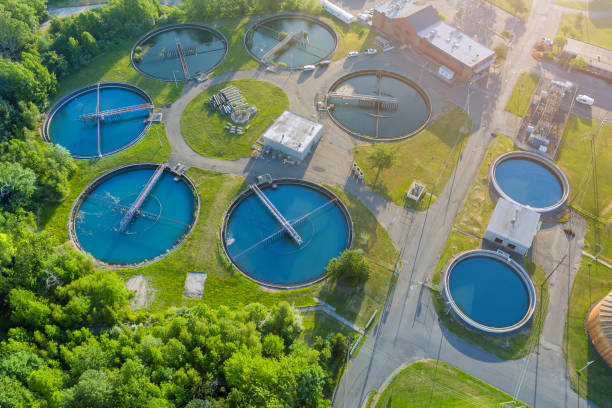As urbanization continues to rise, managing wastewater has become one of the most pressing challenges of modern infrastructure. Whether it’s a housing society, hotel, or industrial complex, everyone needs a sustainable solution to handle sewage responsibly. That’s where the best sewage treatment plant manufacturers step in — offering cutting-edge systems designed to protect both the environment and public health.
Why Sewage Treatment Plants Are No Longer Optional
Think about this — every drop of wastewater we release carries contaminants that, if untreated, end up polluting rivers, lakes, and soil. According to the UN Water Report, over 80% of the world’s wastewater flows back into the environment untreated. That’s alarming! Sewage treatment plants (STPs) act as silent guardians, filtering out harmful elements and converting waste into reusable water for gardening, cooling, or flushing.
How Do Sewage Treatment Plants Work?
STPs may sound complicated, but their operation follows a surprisingly logical flow. The process involves several stages designed to treat water both physically and biologically:
1. Primary Treatment
This is where all visible waste — plastics, oils, and solids — is separated using screening and sedimentation techniques. It’s the initial cleaning phase that prepares water for deeper purification.
2. Secondary Treatment
In this stage, microorganisms do the heavy lifting. They break down organic matter, reducing harmful bacteria and converting sludge into harmless biomass.
3. Tertiary Treatment
This final phase polishes the water using filtration, UV disinfection, or chlorination. The result? Crystal-clear water safe for reuse or discharge as per environmental regulations.
Why Choose Leading Manufacturers for Your STP
Choosing the right sewage treatment plant manufacturer isn’t just about buying machinery — it’s about long-term sustainability, performance, and compliance. Top manufacturers ensure each unit is designed with precision, energy efficiency, and adaptability in mind.
- Customization: They design systems tailored to your water load, usage type, and space constraints.
- Advanced Technology: From MBBR (Moving Bed Biofilm Reactor) to SBR (Sequential Batch Reactor), modern systems focus on low energy use and high efficiency.
- Regulatory Compliance: Certified plants adhere to Pollution Control Board (PCB) norms and ISO standards for environmental safety.
- Low Maintenance: Compact and automated STPs require minimal manual intervention, reducing operational costs over time.
Key Industries Benefiting from Sewage Treatment Plants
The need for wastewater treatment stretches across industries. Here are some sectors where STPs are indispensable:
- Real Estate: Apartments, gated communities, and commercial complexes rely on STPs to meet sustainability and building code requirements.
- Hospitality: Hotels and resorts use STPs to recycle water for landscaping and cooling purposes.
- Manufacturing: Factories benefit from reduced water bills and environmental compliance.
- Educational Institutions: Schools and universities use STPs to create eco-friendly campuses.
Benefits of Installing an STP
Let’s face it — water scarcity is no longer a distant concern. Installing an STP today is an investment in your tomorrow. Here’s what it brings to the table:
- Environmental Protection: Prevents untreated sewage from contaminating natural water bodies.
- Cost Efficiency: Recycled water reduces overall water consumption costs.
- Regulatory Advantage: Compliance with environmental norms avoids heavy fines.
- Corporate Responsibility: Enhances your brand’s green image and social accountability.
What to Look for in a Sewage Treatment Plant Manufacturer
Before you finalize your choice, consider these essentials:
- Proven Experience: Go for a manufacturer with a strong portfolio and case studies.
- Post-Sales Support: Maintenance and AMC (Annual Maintenance Contracts) are crucial.
- Scalability: The system should grow with your future needs.
- Energy Efficiency: Opt for models that use minimal electricity and offer automation.
Frequently Asked Questions (FAQ)
1. What is the lifespan of a sewage treatment plant?
With proper maintenance, an STP can last 15–20 years or more. Regular servicing helps maintain efficiency and performance.
2. How much does it cost to install an STP?
Cost depends on capacity, design, and location. For small residential setups, it can start from a few lakhs, while large industrial systems can go into crores.
3. Can treated water from an STP be reused?
Absolutely! Treated water is often used for gardening, flushing, or industrial cooling. It significantly reduces dependency on freshwater sources.
4. Are STPs mandatory for all buildings?
Yes. In most cities, Pollution Control Boards mandate STPs for residential, commercial, and industrial establishments with specific occupancy or discharge levels.
Final Thoughts
As water scarcity and pollution continue to challenge our planet, sewage treatment plants are not just infrastructure—they’re a necessity. Partnering with the right manufacturer ensures quality, compliance, and long-term sustainability. It’s time we stop viewing wastewater as waste—and start seeing it as a renewable resource for the future.



